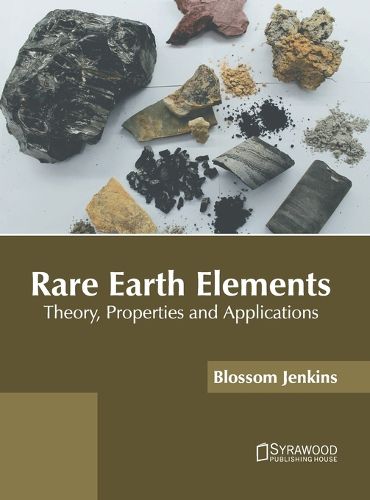Readings Newsletter
Become a Readings Member to make your shopping experience even easier.
Sign in or sign up for free!
You’re not far away from qualifying for FREE standard shipping within Australia
You’ve qualified for FREE standard shipping within Australia
The cart is loading…






The rare-earth elements (REEs) or lanthanides refer to a group of 17 nearly identical lustrous silvery-white soft heavy metals. These comprise the 15 lanthanides listed on the periodic table as well as yttrium and scandium. REEs are lustrous but they tarnish in air. The rare earth metals have high electrical conductivity. There are extremely minute differences in the solubility and complex formation between these elements. Lanthanum, cerium, neodymium and yttrium are the most abundant rare earth elements. The primary economic sources of REEs are the minerals loparite, bastnasite, monazite, and lateritic ion-adsorption clays. They react with other metallic and non-metallic elements to form compounds having distinct chemical properties. REEs are utilized in the production of phosphors, catalysts and polishing compounds. The compounds that comprise rare earth elements have a wide range of uses including lasers, magnetic materials, electrical and electronic components, glass and industrial processes. They are also used for defense applications such as radar and sonar systems, electronic displays, and guidance systems. This book contains some path-breaking studies related to the rare earth elements. Researchers and students studying these elements will be greatly assisted by it.
$9.00 standard shipping within Australia
FREE standard shipping within Australia for orders over $100.00
Express & International shipping calculated at checkout
The rare-earth elements (REEs) or lanthanides refer to a group of 17 nearly identical lustrous silvery-white soft heavy metals. These comprise the 15 lanthanides listed on the periodic table as well as yttrium and scandium. REEs are lustrous but they tarnish in air. The rare earth metals have high electrical conductivity. There are extremely minute differences in the solubility and complex formation between these elements. Lanthanum, cerium, neodymium and yttrium are the most abundant rare earth elements. The primary economic sources of REEs are the minerals loparite, bastnasite, monazite, and lateritic ion-adsorption clays. They react with other metallic and non-metallic elements to form compounds having distinct chemical properties. REEs are utilized in the production of phosphors, catalysts and polishing compounds. The compounds that comprise rare earth elements have a wide range of uses including lasers, magnetic materials, electrical and electronic components, glass and industrial processes. They are also used for defense applications such as radar and sonar systems, electronic displays, and guidance systems. This book contains some path-breaking studies related to the rare earth elements. Researchers and students studying these elements will be greatly assisted by it.